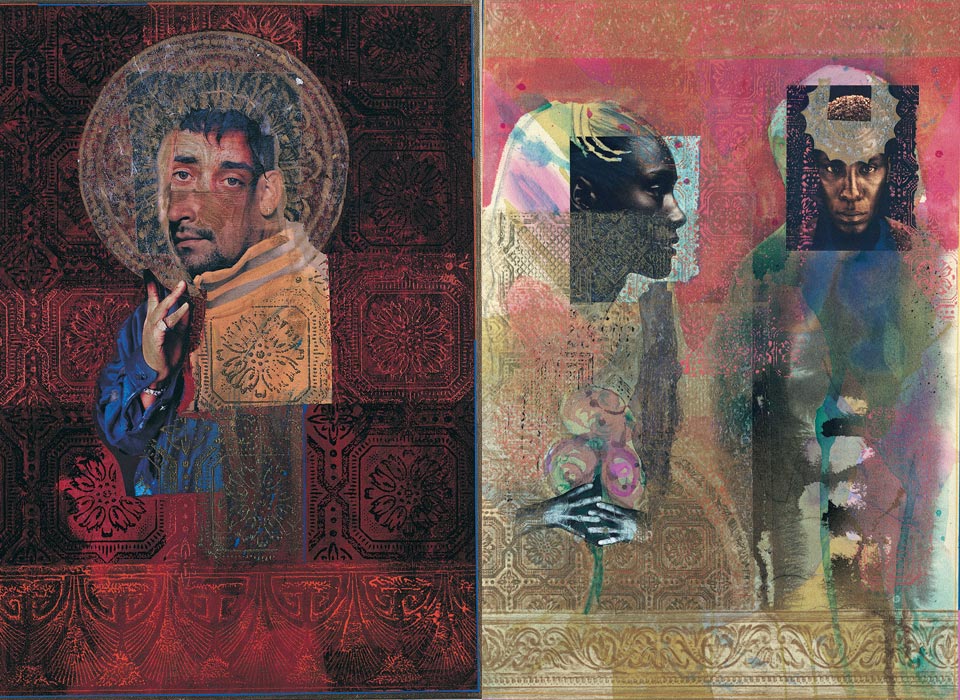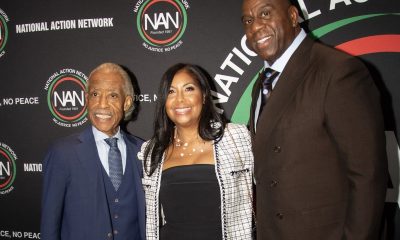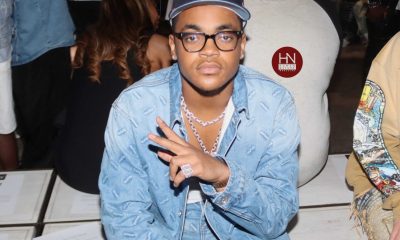Art & Style
New York Latino Museum Explores Women Artists, the Young Lords and Contemporary Collages
El Museo del Barrio Harlem, New York City’s only Latino museum dedicated to Puerto Rican, Caribbean and Latin American art, this summer opened several rich and power exhibitions, including “Rodriguez Calero: Urban Martyrs and Latter Day Santos,” “Cut N’ Mix: Contemporary Collage” and “Presente! The Young Lords in New York.”
In “Urban Martyrs and Latter Day Santos,” Puerto Rican Rodríguez Calero forges her powerful and unique style called “acrollage,” a technique of layering glazes of luminous colors with rice and other kinds of paper. She does this by blending fermenting surfaces and stenciled patterns, which helps her paintings attain lustrous color and texture.
Guest-curated by Alejandro Anreus, the exhibit incorporates popular urban/hip-hop cultural figures, Renaissance and religious motifs, and iconography. The exhibit also includes a mix of large acrollage canvases, smaller collages, fotacrolés (altered photography) on canvas board, in addition to works of mixed media on paper.
“Urban Martyrs and Latter-Day Santos” marked first time El Museo del Barrio has surveyed Calero, who is the second woman featured in the museum’s annual female artist retrospective series.
Presente! The Young Lords in New York explores the legacy of political activist group the Young Lords in three locations across New York — the El Museo in East Harlem, The Bronx Museum of the Arts, and at Loisiada Inc. on the Lower East Side in Manhattan. Each exhibition focuses on specific political events that were organized by the Young Lords in those respective neighborhoods.
Founded in Chicago in 1969, the Young Lords Organization arose from a street gang composed mainly of the unemployed service workers, a small number of proletarians and the permanently unemployed, mostly Chicanos and Puerto Ricans.
The exhibition at El Museo del Barrio displays the Young Lords’ work in East Harlem, including the organization’s series of theatrical garbage-dumping protests and their peaceful occupation of the First People’s Church. To show such events, for example, copies of the Young Lords weekly newspaper, Palante, were on display. The exhibition also explored the legacy of the Young Lords and their relationship between art and activism.
Images by photographer Hiram Maristany that feature the Young Lords’ garbage offensive and their takeover of the First Spanish Methodist Church of East Harlem, which years later was renamed by the Young Lords as The People’s Church. The exhibition also highlights the Young Lord’s free morning breakfast program, the rerouting of a TB-testing truck and the funeral of Julio Roldán, died from a supposed suicide in the custody of NYPD.
Cut N’ Mix
“Cut N’ Mix: Contemporary Collage” highlights experimental collage techniques using different mediums. Artists used radical processes in some cases to create traditional and “extreme” collages, with some involving sound, drawings, linoleum, plastic or wood The artists included in the exhibition range from established artists who are veterans of collage to new generations of artists experimenting with this malleable medium.
The exhibition takes its inspiration from Dick Hebdidge’s series of essays, Cut N Mix: Culture, Identity and Caribbean Music, which were published in 1980. In his essays, Hebdidge explored the variations of Caribbean reggae and dancehall and other related styles of music as emblematic markers of Caribbean ideas of nationhood, belonging, and the making of culture.
This collection will be on display at El Museo del Barrio in New York through October 17.














